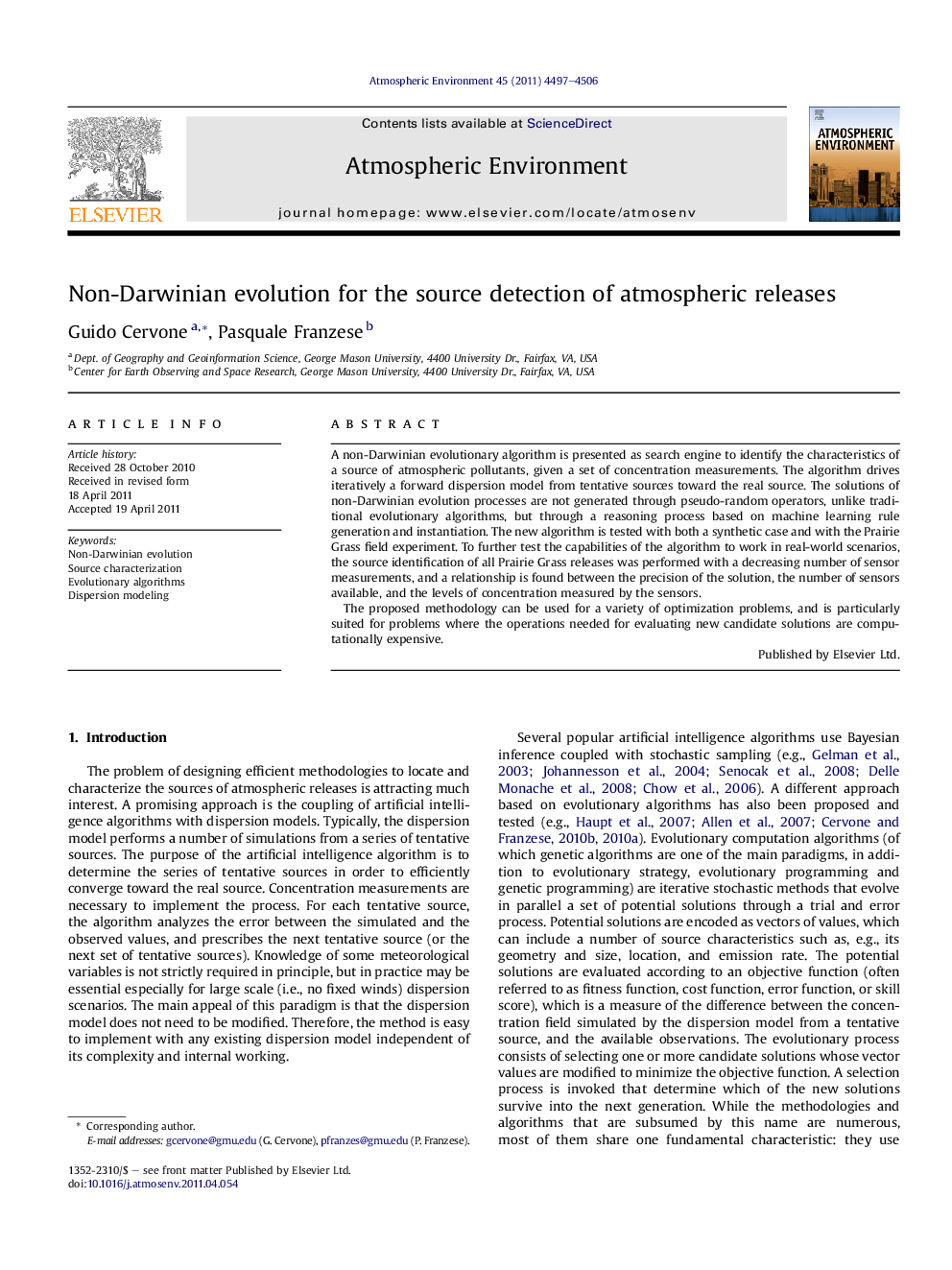| Article ID | Journal | Published Year | Pages | File Type |
|---|---|---|---|---|
| 4439677 | Atmospheric Environment | 2011 | 10 Pages |
A non-Darwinian evolutionary algorithm is presented as search engine to identify the characteristics of a source of atmospheric pollutants, given a set of concentration measurements. The algorithm drives iteratively a forward dispersion model from tentative sources toward the real source. The solutions of non-Darwinian evolution processes are not generated through pseudo-random operators, unlike traditional evolutionary algorithms, but through a reasoning process based on machine learning rule generation and instantiation. The new algorithm is tested with both a synthetic case and with the Prairie Grass field experiment. To further test the capabilities of the algorithm to work in real-world scenarios, the source identification of all Prairie Grass releases was performed with a decreasing number of sensor measurements, and a relationship is found between the precision of the solution, the number of sensors available, and the levels of concentration measured by the sensors.The proposed methodology can be used for a variety of optimization problems, and is particularly suited for problems where the operations needed for evaluating new candidate solutions are computationally expensive.
► A non-Darwinian evolutionary algorithm for the source characterization of atmospheric pollutants. ► The algorithm is tested with a synthetic case and with the Prairie Grass field experiment. ► The source identification is performed with a decreasing number of observations. ► A relationship is found between the error, the number of sensors, and their concentration.
